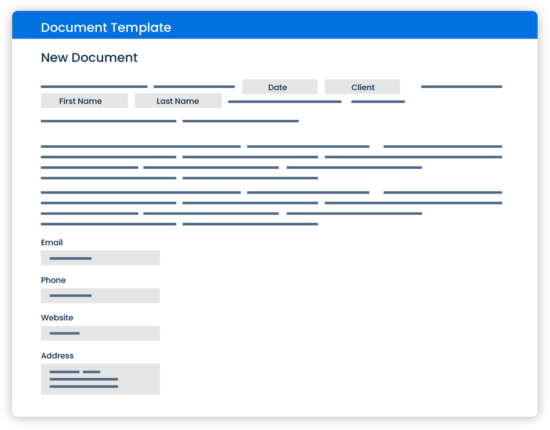Free Reasons On Picking Storage Units Websites
Wiki Article
10 Tips For Office Relocation With Regard To A Comprehensive Service Offering
Moving offices involves more than just moving desks and chairs; it requires strategic planning, coordination, and the right services to make sure that the transition is smooth. Here are 10 tips for a comprehensive service offering when it comes to office relocation:
1. The consultation process and the detailed plan
Conduct a consultation to learn about the client's timeliness as well as budget and requirements. A customized relocation plan should include the timeline and budget estimates as well as crucial milestones. A thorough survey of the location could help to identify possible obstacles such as access restrictions and special equipment requirements.
2. Inventory Management and Space Planning
Organise and catalog office equipment, furniture, and equipment. It will help ensure that all items are packed efficiently and nothing is lost or lost during the relocation. Space planning is offered to optimize the new design of the office based upon workflow, employee needs and ergonomics.
3. Professional Packing and Unpacking Services
Employ professional packing techniques to safeguard office equipment, such as servers, computers, and sensitive files. Offer unpacking and setup services to ensure that the office is set up quickly and get the office up and running.
4. IT and Technology Relocation Services
Coordinate relocation of IT Infrastructure, such as telecom systems, servers and datacenters. Ensure proper disconnection, transport, and reconnection of all systems to minimize downtime. Provide IT and network installation services for the new site.
5. Furniture Removal and Reassembly
Specialized services are provided to disassemble, move, and reconfiguring office furniture. These include cubicles and desks along with chairs, conference tables, and other furniture. The security of furniture and employees is ensured by the proper handling.
6. Comprehensive Moving Insurance and Risk Management
Coverage for moving insurance to protect against any potential damages or losses. Prepare a risk mitigation plan to deal with any possible issues such as delays, damage or unexpected costs.
7. Building Management Coordination
Co-ordinate with the building's managers at both old and new sites to deal with parking permits and loading dock reservations. Also arrange elevator access. To avoid delays and extra cost, ensure that you comply with building standards.
8. Sustainable and eco-friendly practices
Use sustainable methods like recycling unwanted furniture, minimising packing waste and using eco-friendly materials. Offer services to donate or dispose of old furniture, equipment and other objects using a sustainable method.
9. Support for Post-Move and setting-in services
Following the relocation, provide assistance for any issues that may arise. Offer settling services like IT support and orientation for employees.
10. Assistance in the area of Communication and Change Management.
Provide templates, timelines and FAQs to the client to keep their employees up-to-date. Provide change management services to assist employees in adapting to the new working environment that can boost morale and productivity.
Conclusion
A complete office moving service is more than simply moving things from one place into another. It includes planning in detail professional handling and risk management as well as post-move assistance to ensure a the smoothest transition. These services will provide their customers a less stressful and enjoyable experience. See the best storage space to rent blog for more examples including herman miller furniture, herman miller furniture, furniture in an office, herman miller second hand chair, 2nd hand herman miller aeron, warehouse office furniture, working chairs, aeron chair herman miller used, 2nd hand office chairs, chair office and more.

Security And Compliance: 10 Tips For Document Management Systems
Compliance and security are important aspects of every document management system (DMS). A well designed DMS should include strong security features that protect sensitive data, as well comply with industry standards or regulations like GDPR, HIPAA and ISO standards. Here are 10 ways to increasing security and compliance within the context of a DMS:
1. Implement Role-Based Access Control
Make sure the DMS is compatible with Role-Based Access Control to restrict access to sensitive documents based on user roles and responsibilities. This helps reduce the risk of unauthorized access and ensures that only authorized users can view, edit, or delete documents.
2. Secure your data with encryption at rest and in transit
Make use of strong encryption techniques to protect documents while in transit or at the rest of their journey. This can secure the access of sensitive data even if it is intercepted.
3. Check for compliance with Industry Regulations
The DMS design should conform to industry-specific regulations such as GDPR (General Data Protection Regulation), HIPAA (Health Insurance Accountability and Portability Act), CCPA (Compliance with Consumer Payments Act) or FINRA. To meet regulatory requirements be sure that the DMS has features that allow data anonymization as well as consent management.
4. Maintain Detailed Audit Trails and Activity Logs
The DMS must keep audit trails that document all activities of users, including document creation, modification, and deletion. These logs are crucial to monitor usage, identifying illegal activities, and providing accountability in case an incident involving security.
5. Incorporate Multi-Factor Authentication (MFA)
You can enable Multi-Factor Authentication when accessing the DMS to add an extra layer of security. MFA makes use of a combination of things the user has (like their fingerprint) as well as something they know (like their password).
6. Update and patch regularly DMS
Update the DMS frequently to incorporate the most recent security patches. Staying current with patches and updates can reduce security vulnerabilities that could be used to gain access.
7. Install Data Loss Prevention Measures
Incorporate Data Loss Prevention tools to ensure the security of sensitive data in the DMS. DLP solutions help to detect and prevent potential data breaches by identifying and blocking unauthorized access to or transfer of confidential information.
8. Policy on Document Retention and Disposal Policy
Create automated document storage and disposal guidelines within the DMS to ensure that you meet the legal and regulatory requirements. This will ensure that documents are stored for the time period required and securely disposed of once they are no longer needed.
9. Provide Secure Remote Access and Mobile Device Management (MDM)
With the rise of remote work, be sure that your DMS provides secure remote access and is integrated with Mobile Device Management solutions. This safeguards sensitive documents accessed via mobile devices by using security protocols like remote wipe and device encryption.
10. Conduct regular security audits and Compliance Checks
Perform regular security and compliance checks to identify the DMS's vulnerabilities and weaknesses. periodic assessments can help ensure that your system is in compliance with new regulations, and also protects you from new threats.
Conclusion
By prioritizing security of data and compliance, companies can protect sensitive information and ensure the integrity of data while avoiding legal and financial penalties. A DMS that is equipped with strong security capabilities and compliance features provides security and peace of mind, as well as increases confidence among stakeholders and clients. It also helps create an environment that is more secure and reliable document management system. See the most popular document management system examples for blog info including archiving information, document archiving system, dms document management system software, records archiving, best workflow management software, dms system, automated workflow solutions, document imaging services, electronic document management, document handling system and more.

10 Tips For International Relocation Companies, Transparency In The Cost Flexible And Customer Service
When evaluating the international moving firms, cost transparency and flexibility, as well as customer service, and responsiveness are important elements that assure a stress-free, smooth experience. Here are ten tips to help you evaluate these aspects efficiently:
1. Request detailed and itemized quotes
Obtain a detailed, itemized quote that breaks down all the costs associated with the move. It should include all costs including transportation, packing, insurance, customs and other charges. Clear itemization helps avoid unexpected costs and helps you know what you're spending money on.
2. Be sure to inquire about any additional costs or Hidden Costs
Find out about any extra fees or charges that may arise. You should also ask about any hidden fees or charges like those for extra time, storage costs or other unexpected costs. Making a budget that is accurate and avoids surprises is much easier if you are aware of these possible expenses.
3. Compare Quotes from Multiple Companies
Compare the costs and services offered by requesting quotes from different international relocation firms. You can then compare the costs and decide which one is the most competitive.
4. Also, you can check the flexibility of service packages
Think about companies that offer services that are flexible and customizable for your particular needs. Service providers that are flexible can customize their offerings to fit your needs and budget.
5. Find out about the change and cancellation policy.
Review the policies of the company regarding changes or cancellations to the relocation plan. Flexible companies should be able to offer an acceptable option for changing dates, services and plans as required. They must also make clear the costs associated with this plan.
6. How to Assess Customer Support
You can test the level of customer service by calling the business with any questions or concerns. Look for professionalism, responsiveness and helpfulness. Excellent customer service is essential for quick resolution of issues and an easy relocation.
7. For 24/7 Support
Pick a company offering 24/7 customer service. This is crucial especially when traveling internationally and dealing with different time zones. With 24/7 support you'll have access to assistance at any time you require it, regardless of time difference.
Examine your communication channels and support channels.
Check for the various options for support. For example live chat, email, phone or even in-person consultations. Different communication options offer flexibility and ease of communication with the company.
9. Be transparent in the execution of services as well as timelines, costs and cost
Ensure that the company provides transparent timelines and clear information regarding every step of the relocation process. Regular updates on your move progress and estimated delivery date will assist you to manage expectations.
10. Testimonials and Reviews from Customers
It is also possible to look through testimonials from past customers to find out how the company is perceived as regards transparency and flexibility as well as customer service. Customer feedback is valuable information about how the company handles these issues.
If you're interested in learning more about this subject Click here.
Focusing on cost transparency and flexibility, as along with customer service will allow you to select an international relocation firm which has clear pricing and a range of services. It will also provide an excellent service for your moving process. These aspects can ensure an efficient, smooth and hassle-free relocation. Check out the best read this on international removals for website advice including movers sydney, house moving services, mover's, removal companies, moving company sydney, relocations company, moving services uk, overseas moving company, crown moving services, moving of furniture and more.
